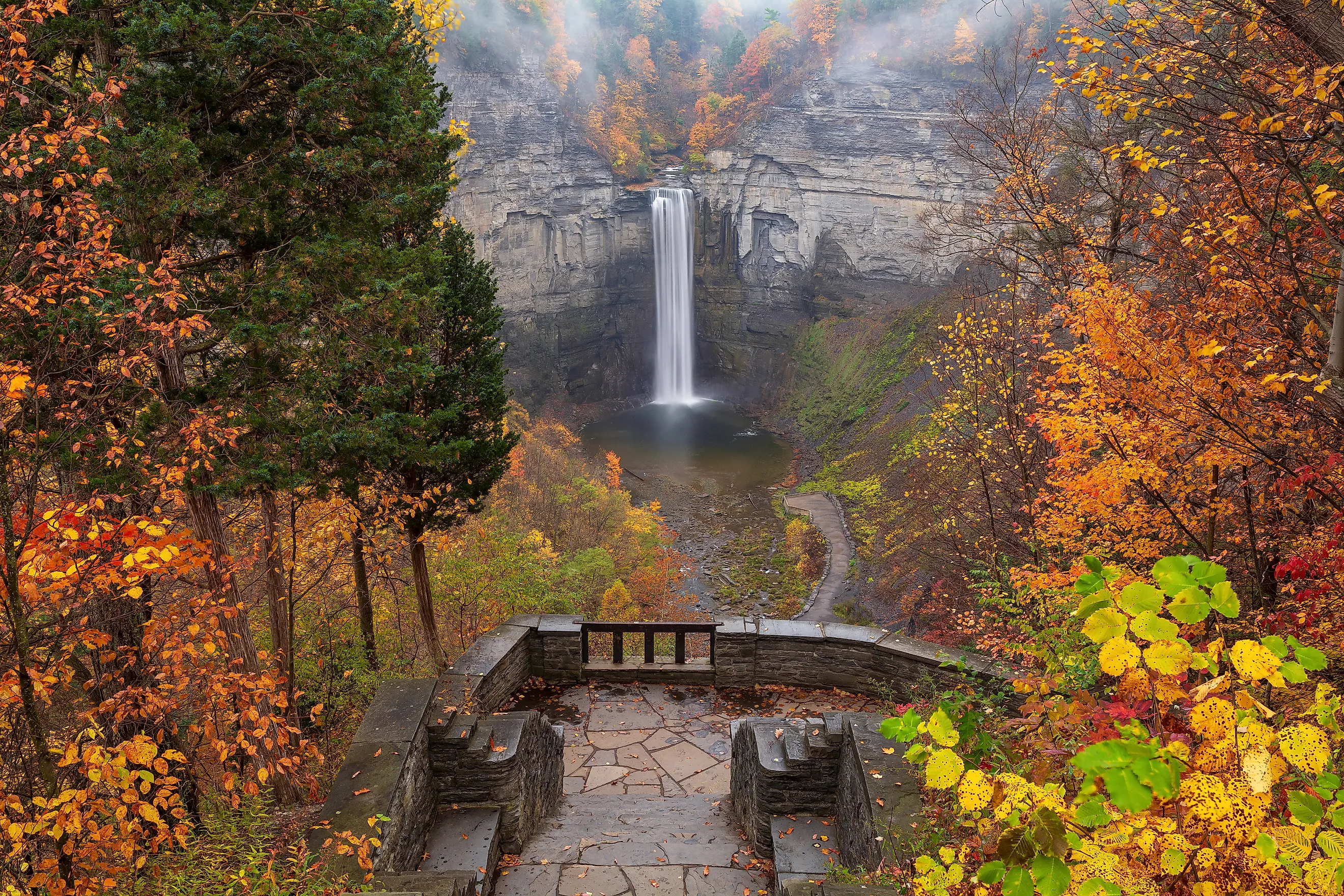
The Natural Wonders of New York
The state of New York is more than just the concrete jungle of New York City. Its borders are vast and encompass spectacular landscapes featuring forests, mountains, lakes, and the gorgeous Atlantic coastline. Among New York's wild lands are several noteworthy natural features that attract visitors from all over. Here, we will cover nine such destinations in the Empire State so you can know exactly where to go on your next outdoor adventure.
Adirondack Mountains
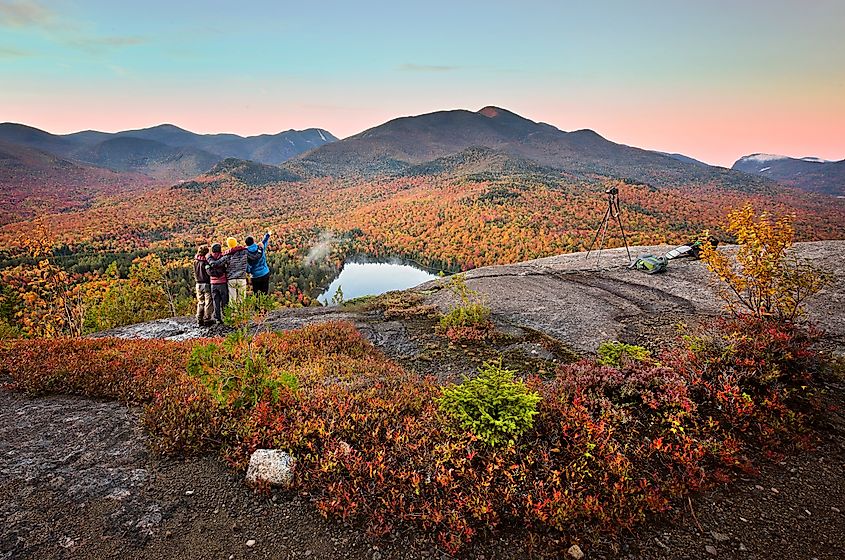
The image of mountains doesn't generally come to mind when people think about the East Coast, which is why the Adirondack Mountains, located in northeastern New York State, wows those who see them for the first time. This range spans approximately 6 million acres and forms part of the largest protected natural area in the contiguous United States, the Adirondack Park. This region covers a whopping 2.6 million acres!
The mountains themselves are characterized by their rugged terrain, lush forests, and thousands of lakes and ponds. The region's highest peak, Mount Marcy, rises to 5,344 feet, and many come for the challenging hikes to its top, only to be rewarded with panoramic views of the region. The Adirondacks are also home to a diverse range of wildlife, including black bears, moose, and numerous bird species.
Outdoor recreation, as you can imagine is a major draw, with activities ranging from hiking and camping in the summer to skiing and snowboarding in winter. The Adirondack region features countless hiking trails, including the famed Cascade Mountain Trail.
The history of the Adirondack Mountains is also worth exploring, with notable sites such as Fort Ticonderoga and the Adirondack Museum both offering insights into the region's past. Additionally, towns like Lake Placid, famous for the nearby Whiteface Mountain and hosting the Winter Olympics in 1932 and 1980, and Saranac Lake, with its vast assortment of lodges and cabins, are perfect places to stay during your visit.
Fire Island National Seashore
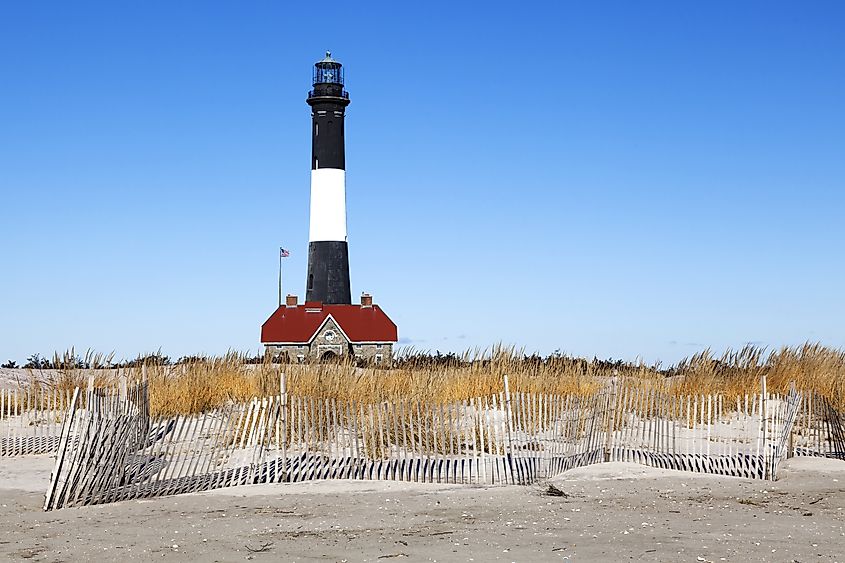
Find solace on the densely populated Long Island at Fire Island National Seashore, one of the few national parks in New York (as most of this state's parks are operated at the state level). Established in 1964, this protected area is a popular retreat from the bustling urban life of nearby New York City. This park encompasses a 26-mile stretch of barrier island off the southern side of Long Island and serves as an amazing place to find a beach to relax on, diverse ecosystems to explore, and landmarks related to maritime history. The island's extensive beaches are ideal for swimming, sunbathing, and surfing.
Fire Island National Seashore holds a variety of natural landscapes, including sandy dunes, oceanside forests, and salt marshes, which support the wildlife who call this natural area home. It is a highly sought-after location for birdwatchers, as you can observe species like ospreys, piping plovers, and a variety of migratory birds here. The island's waters are also home to marine life, such as seals and dolphins. Hiking trails, such as those in the Sunken Forest, will allow you to see up close the unique flora and fauna that can be found here.
The Fire Island Lighthouse, a historic landmark, offers panoramic views from its top and features exhibits that give insights into the island's heritage, which is heavily associated with the ocean. Accessible primarily by ferry, Fire Island also remains a car-free environment, preserving its serene and unspoiled character.
Niagara Falls
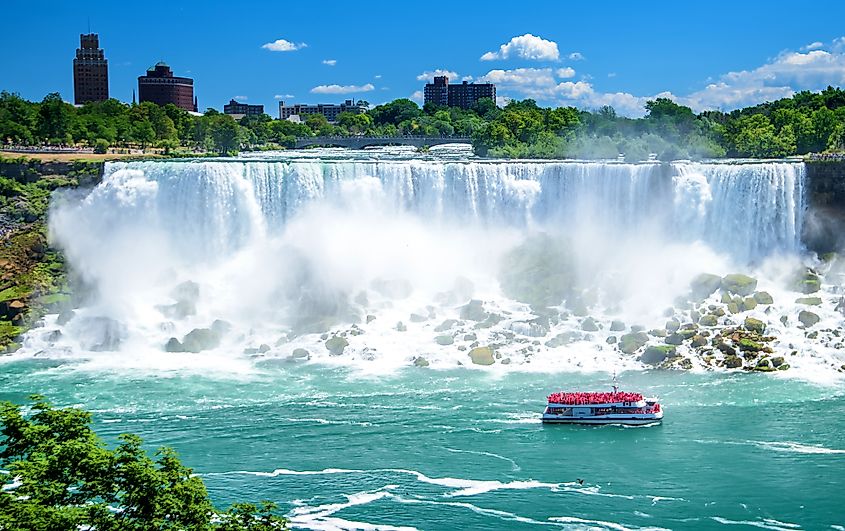
Niagara Falls, located near the aptly named town of Niagara Falls (just north of the city of Buffalo) in the far northeast corner of the state, is a world-renowned natural landmark. It sits on the border between Ontario, Canada, and New York, USA, making it a popular spot for both Canadians and Americans to visit.
The falls were formed around 10,000 years ago during the last Ice Age and have since become a major tourist attraction, drawing millions of visitors annually. It comprises three distinct falls: the Horseshoe Falls, the American Falls, and the Bridal Veil Falls. The Horseshoe Falls, the largest of the three, is predominantly on the Canadian side and wows millions of visitors every year with its sheer size and powerful flow. More than 168,000 cubic meters of water per minute plunge over the brink, giving it the highest flow rate of any waterfall in North America. The source of the water is mainly from the Great Lakes, with Lake Erie being the direct connection to the falls and Lake Ontario being at its outflow at the end of the Niagara River.
Visitors can experience Niagara Falls through various methods, including boat tours like the Maid of the Mist, observation decks on either side of the border, hikes along the Niagara Gorge, and the Journey Behind the Falls, a tour that will take you through the carved-out rock behind the falls.
Niagara Falls is also an important source of hydroelectric power for the region, with dams harnessing the energy from the massive force of the waters flowing through them.
Finger Lakes
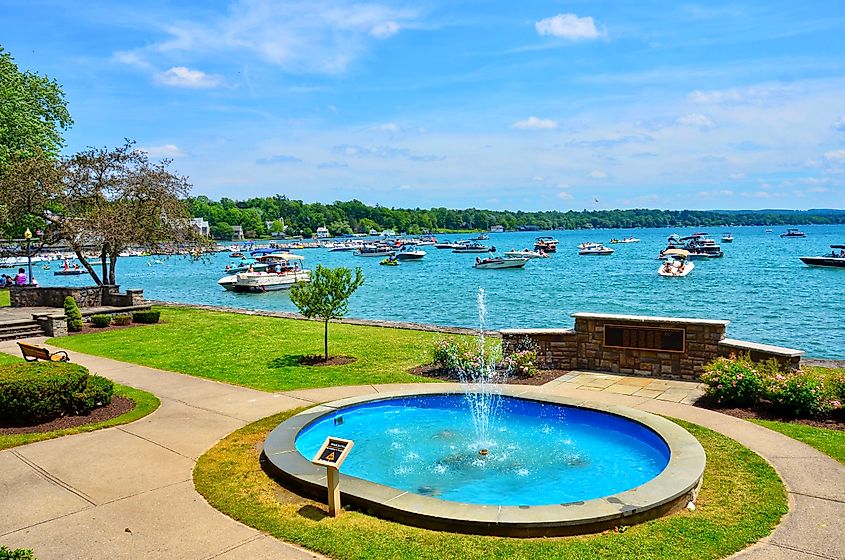
In central New York, the Finger Lakes region is well known for its series of long, narrow lakes that resemble fingers. The area encompasses 11 primary lakes, with the largest and most well-known being Seneca, Cayuga, and Keuka Lakes. The lakes in this area are particularly popular for resident New Yorkers and Visitors alike as a vacation spot; a perfect place to relax by the water on a summer day.
The region's glacially formed lakes are surrounded by rolling hills, vineyards, and several delightful cities and towns like Ithaca, Skaneateles, and Geneva. This area is rich in outdoor recreational activities. Boating, fishing, and swimming are popular activities on the lakes, while the surrounding parks and trails provide excellent hiking, biking, and camping options. Notable natural attractions here include Watkins Glen State Park, known for its dramatic gorge and waterfalls, and the Montezuma National Wildlife Refuge, among many more.
As mentioned, the Finger Lakes area is renowned for its wine production, particularly white varietals like Riesling, and the region boasts over 100 wineries, many of which offer tastings and tours that draw in fans of the drink from far and wide. The area's microclimate, influenced by the lakes, along with the glacial till that makes up most of the soil, creates ideal conditions for grape growing.
Watkins Glen State Park
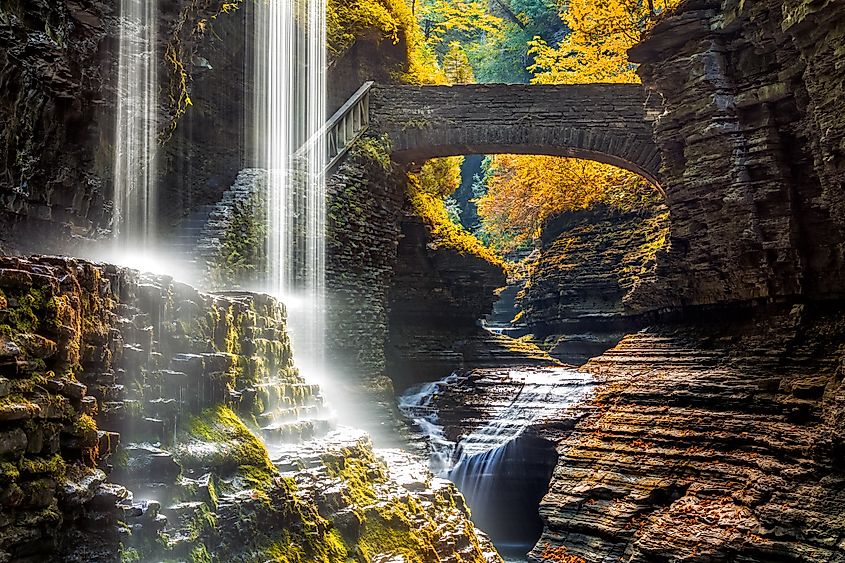
Although briefly mentioned before as an attraction within the Finger Lakes region, this magnificent park deserves its own highlight. Watkins Glen State Park spans 778 acres and features several geological wonders, like a dramatic gorge carved by Glen Creek which descends 400 feet over a course of two miles. This descent is marked by a series of 19 waterfalls, making it a breathtaking destination for nature enthusiasts exploring the trails following the gorge. The North and South Rim Trails provide alternative routes with scenic overlooks and connections to the Finger Lakes Trail, offering more hiking options.
The most famous section of the park is the Gorge Trail, a 1.5-mile path that winds through the canyon, passing behind waterfalls, along cliffs, and over various stone bridges. Highlights include the 60-foot Central Cascade and the iconic Rainbow Falls, where water cascades over a stone bridge, creating a picturesque scene.
Watkins Glen State Park contains a number of useful and fun amenities, including picnic areas, and campgrounds, as well as a town of the same name nearby, making it a place where you can stay comfortably for multiple days if you so wish. This stands out as one of New York's many natural treasures, attracting hundreds of thousands of visitors each year.
Hudson Valley
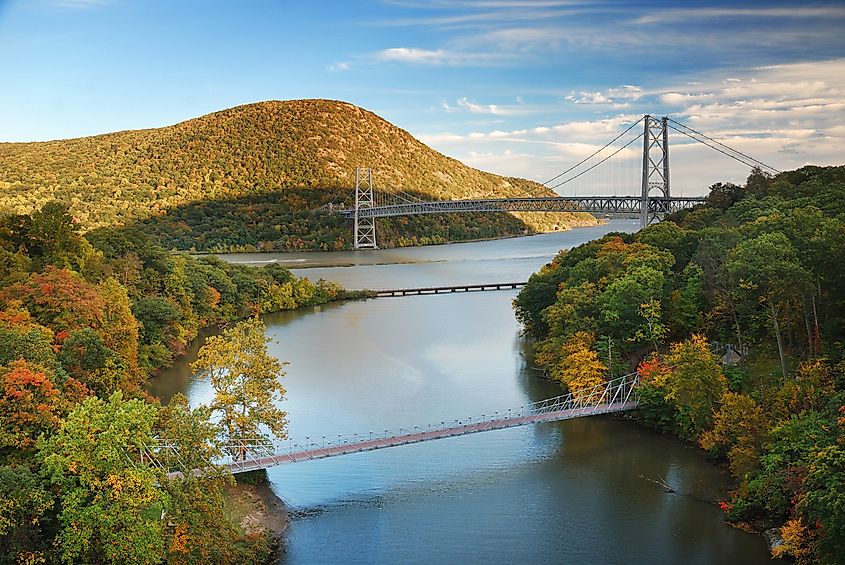
The Hudson Valley covers a fairly large swathe of the state and is a region of great historical, cultural, and natural significance. Stretching along the Hudson River from Westchester County to Albany and NYC beyond, this valley features scenic landscapes, charming towns, and many historic insights into the earliest days of the nation.
The valley's history dates back to the early Dutch settlers in the 17th century, and it played an important role during the American Revolution, with several battles and other events taking place within its confines. Historic sites such as the home of Franklin D. Roosevelt in Hyde Park, the United States Military Academy at West Point, and the Olana State Historic Site are all top spots to get a better look into the area's storied past.
Don't miss out on an opportunity to explore a variety of activities, regardless of what season of the year it is. Embark on a hike in the Catskill and Shawangunk Mountains, go on a kayaking trip on the Hudson River, or go skiing at the Catamount ski resort. This forest coverer area is also highly popular in the fall when the colors of the foliage change from green into an array of brilliant reds, yellows, and oranges.
This rural region of the state also holds some of the finest eateries in the country, with much of the meals to be found being made with the fresh, local produce that is abundant here. Blue Hill At Stone Barns, for example, is a Michelin-star restaurant in Tarrytown serving up locally sourced dishes and wines.
Thousand Islands
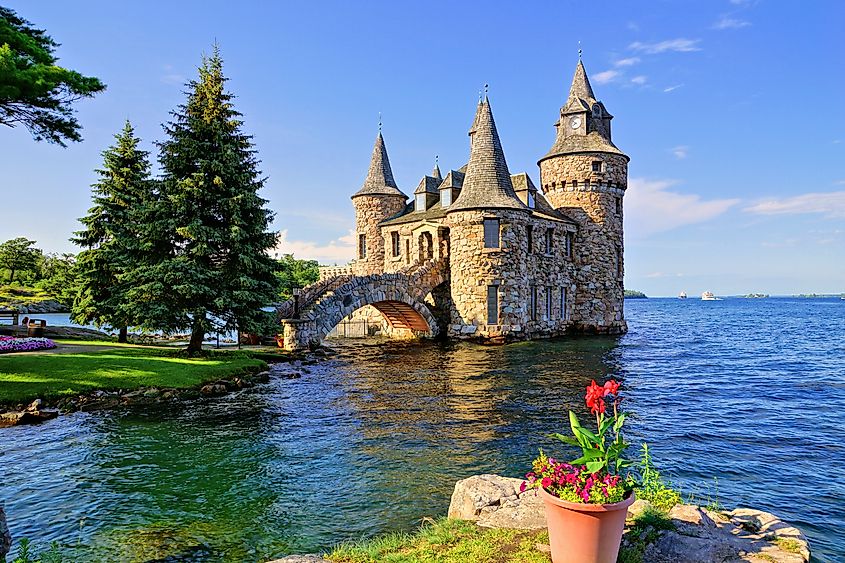
Another shared wonder with Ontario, the Thousand Islands area of northern New York amazes all who visit with its huge collection of islands and other interesting destinations on the Saint Lawrence River. This region comprises over 1,800 islands, ranging from tiny, uninhabited outcroppings to larger, populated islands.
The Thousand Islands feature several state parks, including Wellesley Island State Park and Kring Point State Park, providing ample ways to go sightseeing, camping, hiking, and picnicking during your visit. Towns, such as Clayton and Alexandria Bay, offer a more "modern" way to stay the night here, each containing a decent amount of locally owned restaurants, outfitters, shops, and hotels.
The nearby Boldt Castle on Heart Island and Singer Castle on Dark Island are notable landmarks, both having been made in the Gilded Age in the early 20th century by some of New York's wealthiest families who were as equally wowed by this natural beauty of the islands and visitors are today.
Howe Caverns
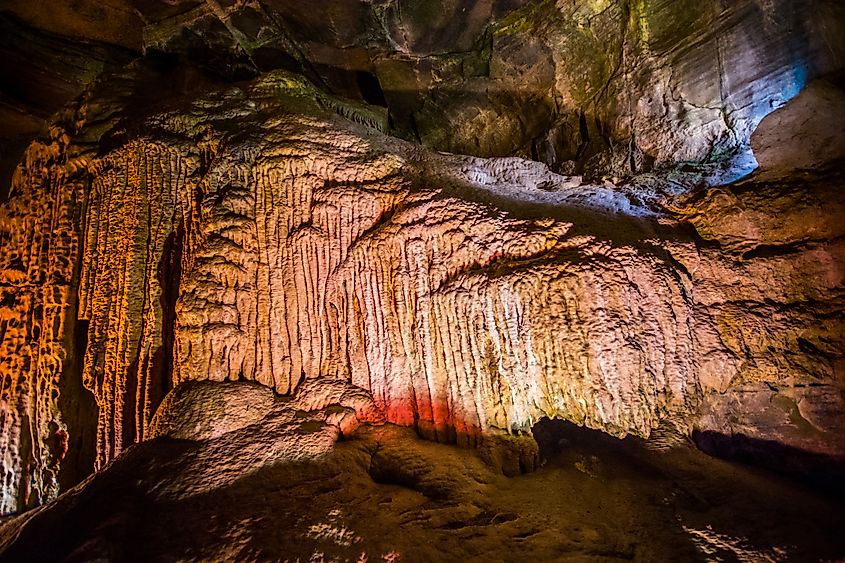
Take your adventures around New York underground with the jaw-dropping cave system in the central area of the state. Discovered in 1842 by local farmer Lester Howe, the caverns are situated 156 feet below the Earth's surface and extend for approximately six miles.
Visitors to Howe Caverns can witness the subterranean world of New York through guided tours that will teach you more about the cave's fascinating geological formations and how the forces of nature made them. Stalactites, stalagmites, flowstone, and limestone corridors create an otherworldly and sometimes spooky landscape. The tour may include a boat ride on the underground Lake of Venus. How many people can say they've taken a boat tour over 150 feet below ground?
The caverns stay around 52 degrees Fahrenheit, making it a comfortable place to visit all year. Howe Caverns also offers special tours, like lantern tours and adventure tours that include crawling and climbing through less accessible parts of the cave. The site also has a visitor center with educational exhibits, a café, and a gift shop. Above ground, the Howe High Adventure Park is another option for those who might feel a bit claustrophobic, with activities like zip-lining and an elevated ropes course (we hope you're not afraid of heights, either!).
Central Park
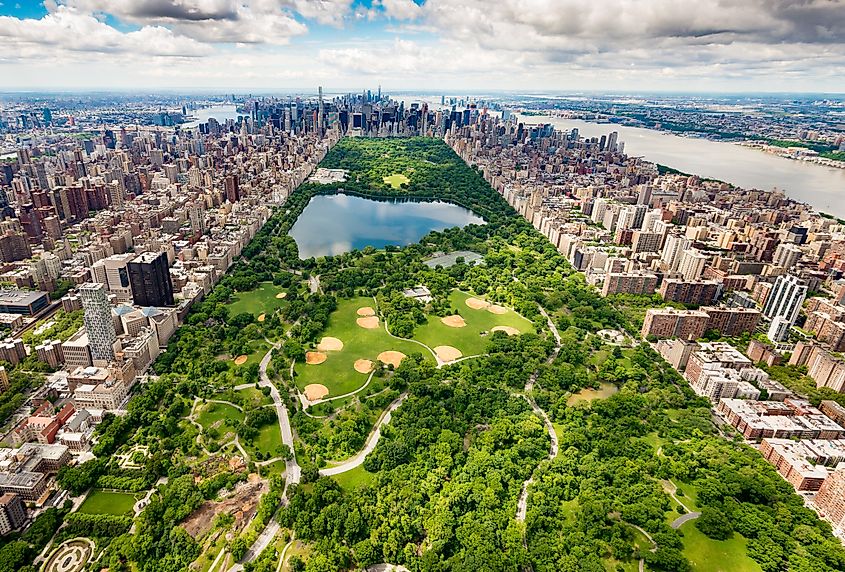
For city dwellers in the Big Apple, a touch of beautiful nature is actually not that far away. In fact, if you look at a map, you will probably notice a huge green section right in the middle of the city. Central Park, located in the heart of Manhattan, New York City, spans 843 acres and is one of the most iconic urban parks in the world. Designed by Frederick Law Olmsted and Calvert Vaux, it opened in 1858 and has since become an important green space for both residents and tourists.
Central Park offers a variety of landscapes, including meadows, wooded areas, and bodies of water like the Central Park Lake and the large Jacqueline Kennedy Onassis Reservoir. Walking, cycling, and horse-drawn carriage rides are popular ways to explore the park. Its thoughtfully designed layout features many spots to visit, from the scenic Bow Bridge to the historic Bethesda Terrace and Fountain.
This park also hosts a wide range of recreational facilities, such as baseball fields, tennis courts, and playgrounds. The Central Park Zoo and the Conservatory Garden add more points of interest for visitors of all ages.
See The Wonders Of New York Today
With New York being a fairly developed state (even with its seemingly endless wild landscapes), it is not too hard to get around and see many of these natural wonders yourself. Whether you are traveling by car or by public transport, most of the destinations are accessible enough for you to visit now, if not very soon. And why not? These places are just waiting to be photographed, explored, and enjoyed by all you nature lovers out there.











